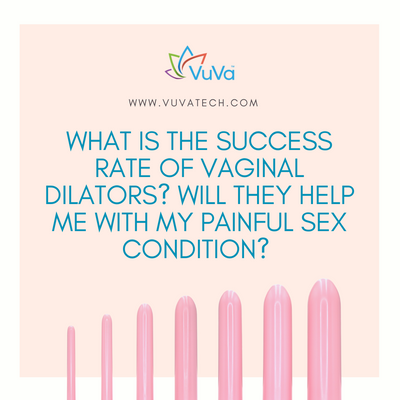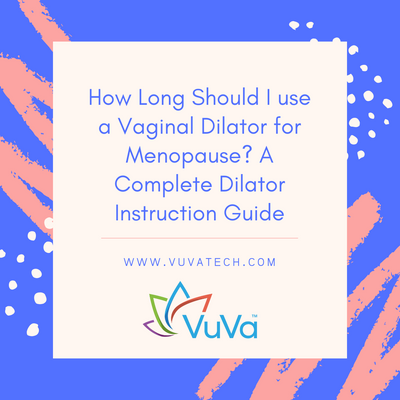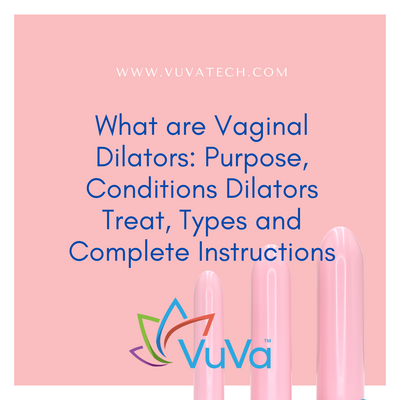
| Tara Langdale
Navigating the Challenges of Vaginal Atrophy: What does it feel like? Understanding, Management, and Support
Vaginal atrophy, also known as atrophic vaginitis, is a condition that affects many women during and after menopause. It occurs when there is a decrease in estrogen levels, leading to thinning, drying and inflammation of the vaginal walls.
Vaginal atrophy might not be a topic that you hear about every day, but for many women, especially those approaching or experiencing menopause, it's a very real and often challenging condition. The silence surrounding vaginal atrophy only exacerbates the discomfort and confusion for those dealing with it. This blog post aims to shed light on what vaginal atrophy feels like, its impact on quality of life, and the ways in which it can be managed and treated.
Introduction to Vaginal Atrophy
Vaginal atrophy, also known as genitourinary syndrome of menopause (GSM), is a condition characterized by the thinning, drying, and inflammation of the vaginal walls due to a decrease in estrogen levels. While it's most commonly associated with menopause, it can also occur during other times of hormonal change, such as breastfeeding or after surgical menopause. It can also be caused after chemotherapy due to the drop in estrogen levels.
JoAnn Pinkerton, MD. Pinkerton is a professor of obstetrics and gynecology at University of Virginia Health System in Charlottesville, Va. and executive director of the North American Menopause Society (NAMS).
“Many women don’t understand that this is a medical issue associated with the loss of vaginal hormones,” says Pinkerton. (1)
What It Feels Like
The symptoms of vaginal atrophy are varied, but commonly include vaginal dryness, itching, burning, pain during intercourse, and frequent urinary tract infections.
Pinkerton explains that in menopause, “Women lose the top layer of superficial cells in the vaginal wall, which keep the vaginal pH in normal range and full of healthy bacteria.”
This leads to changes in the vagina such as overgrowth of pathogenic organisms, which can lead to frequent yeast infections that affect vaginal ph. As the lining of the vagina thins, blood vessels increase, and elasticity decreases, which can cause spasms in the levator muscles of the vagina, contributing to painful intercourse. (1)
Signs and Symptoms
The symptoms of vaginal atrophy can vary from mild discomfort to severe pain and significantly affect a woman's life. Common signs include vaginal dryness, itching, burning, and discomfort during intercourse. This symptom can happen for a few reasons: "One of the first and most common signs of vaginal atrophy is decreased lubrication during sex," says Heather Hirsch, M.D., a physician at the Brigham and Women’s Hospital Menopause and Midlife Clinic in Boston, MA. (2)
Beyond the physical symptoms, the emotional and psychological impact cannot be understated, often leading to decreased libido and strain on intimate relationships.
Real-life stories and testimonials highlight the importance of recognizing these symptoms early. For many women, understanding that their experiences are not uncommon but a treatable medical condition can be a profound relief.
Impact on Quality of Life
Vaginal atrophy doesn't just affect sexual health; it can influence daily activities, personal relationships, and overall quality of life. The discomfort can make routine actions, like sitting for long periods or exercising, challenging and uncomfortable.
Management and Treatment Options
Fortunately, there are several effective treatment options available for those experiencing vaginal atrophy, which can greatly improve quality of life. The first step should be consulting with a healthcare provider who can offer personalized advice and treatment plans based on individual health and symptoms. Treatment options may include:
- Hormonal Treatments: These can involve local estrogen therapy (LET) in the form of creams, vaginal rings, or tablets, which help replenish estrogen levels directly in the vaginal tissues.
- Non-Hormonal Moisturizers and Lubricants: For those who prefer not to use hormone-based treatments or for whom they're contraindicated, over-the-counter vaginal moisturizers and water-based lubricants can offer relief from dryness and discomfort during intercourse. Neueve company has all natural products if you do not want to use Estrogen products.
- Lifestyle Changes: Simple adjustments such as staying hydrated, managing stress, and stopping smoking can also alleviate some symptoms of vaginal atrophy.
- Pelvic Floor Physical Therapy: This specialized form of physical therapy can help strengthen the pelvic floor muscles, improving some of the discomforts associated with vaginal atrophy. If you need to find a pelvic floor therapist, here is a locator to find one near you.
- Neodymium Magnetic Vaginal Dilator Therapy: VuVa Magnetic Vaginal Dilators are designed to restore vaginal capacity, increase the elasticity of vaginal tissues, and expand vaginal walls. Their use facilitates comfortable sexual intercourse by promoting tissue flexibility and expansion. There are no side effects with this at home therapy. (3)
It's essential for women to openly discuss their symptoms and concerns with their healthcare providers, as vaginal atrophy is highly treatable, and no one should have to suffer in silence.
Prevention and Management
For women approaching menopause, understanding the risk of vaginal atrophy and taking preventive measures is key. Regular exercise, maintaining a healthy weight, and avoiding certain irritants can help reduce the risk or severity of symptoms.
Long-term care and management strategies are crucial for those already experiencing vaginal atrophy. Regular follow-ups with healthcare providers, ongoing treatment, and lifestyle adjustments can make a significant difference in managing the condition.
Conclusion
Vaginal atrophy is a condition that can deeply affect a woman's life, but it's not something you have to manage on your own. Education, open conversations, and seeking support from healthcare professionals are essential steps in navigating this challenge.
If you or someone you love is experiencing symptoms of vaginal atrophy, we encourage you to reach out for medical advice. And remember, sharing information and experiences can make a world of difference to someone feeling isolated by their symptoms. Share this post with friends and family to help spread awareness and support those in need.
Article written by Tara Langdale, the Inventor of the VuVa Neodymium Vaginal Dilator
- https://www.medicaleconomics.com/view/treating-vaginal-atrophy-menopausal-women
- https://www.healthcentral.com/slideshow/common-symptoms-of-vaginal-atrophy
- https://www.vuvatech.com/pages/clinical-trials
Other Dilator Helpful Links:
How to Choose your Sizes (Vaginal)













